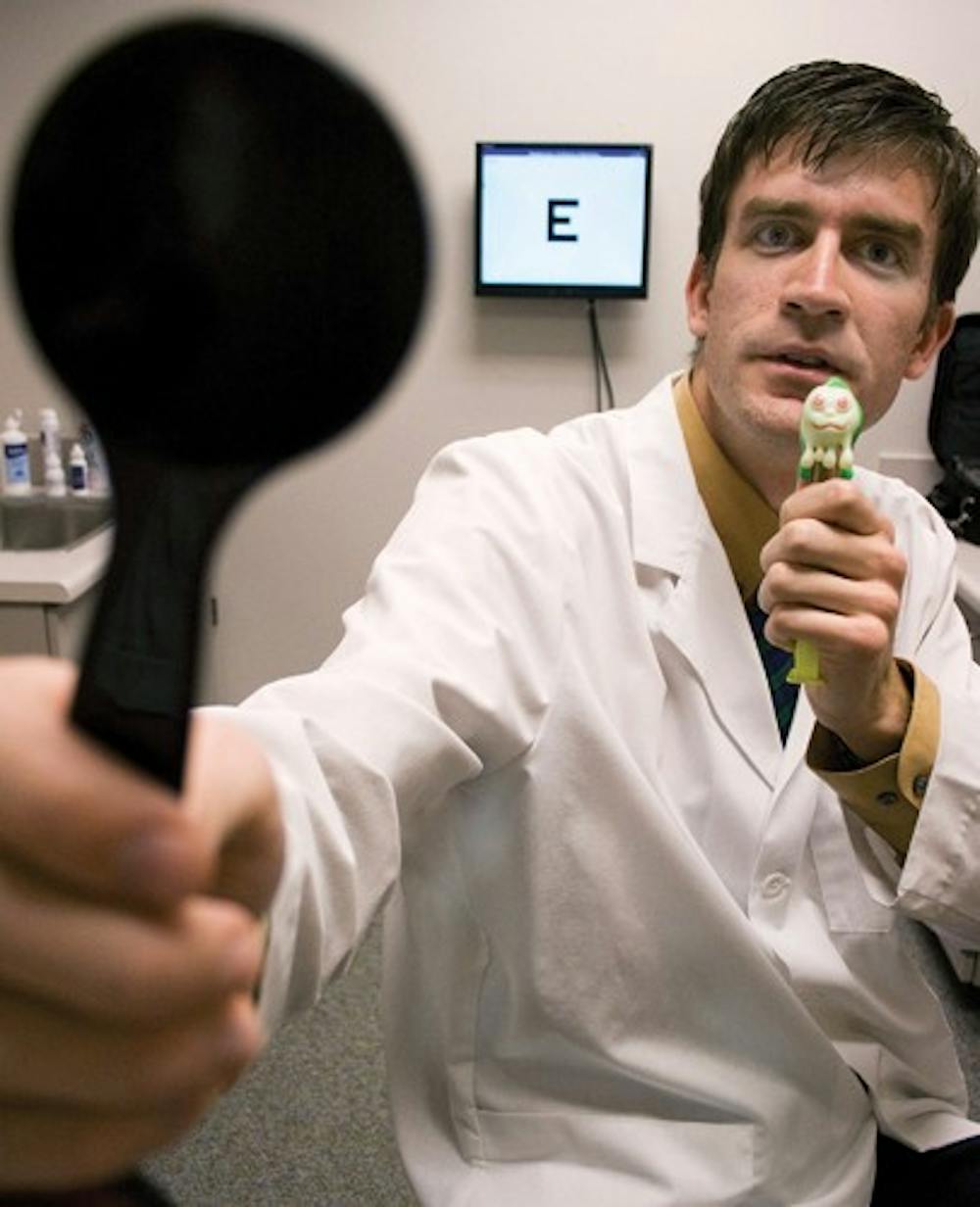Tim Cundiff, a fourth-year optometry student, remembers his first patient, a 13-year-old boy.\n“My first patient encounter was nerve-wracking,” Cundiff said. “It’s the first time you’re looked up to by a patient as a doctor.”\nSixty-nine second-year optometry students will experience similar feelings as they treat patients for the first time as doctors this summer when they begin the clinical phase of their education.\nThe students will work three unpaid 40-hour weeks at the Atwater Eye Care Center this summer, said Gerald Lowther, dean of optometry.\nBefore advancing to clinic work, optometry students must take courses in biochemistry, optics and exam procedures. Then, in their second year of school, the students must pass a competency exam in which they examine a patient, Lowther said.\nAfter taking the exam, a white coat ceremony marks a second-year student’s transition from the classroom to the clinic. The ceremony, which originated at the Columbia University College of Physicians and Surgeons in 1993, took place two weeks ago at Alumni Hall in the Indiana Memorial Union, according to an IU press release. The students were called out individually, and \nfaculty members helped them don white coats. The students also took the Optometric Oath, their version of the Hippocratic Oath.\nLowther said this ceremony has become more significant since it first began at IU.\n“We started out doing the white coat ceremony in the classroom, but now it’s a full-fledged banquet with family and speakers,” he said. \nCundiff, whose own white coat ceremony occurred two years ago, said the ceremony is very important to students.\n“It’s a big step,” he said. “We’ve been reading textbooks for years and now we’re going to work with patients. It’s a rite of passage.”\nThe summer clinical is only the beginning of the experiential phase of the optometry program. In the fourth year of the program, optometry students complete four 12-week rotations in specialty areas, Lowther said. Students work at Veterans Affairs hospitals, referral centers and even the IU School of Optometry Centro de Rehabilitacion Visual, a clinic near Guanajuato, Mexico, that treats the population at little or no cost, Lowther said.\nCundiff served one of his rotations at the marine base in Quantico, Va., where he worked with soldiers deploying to Iraq.\n“I’d fit 20-year-old kids with contacts,” he said. “And the next week, they’d be flying over to Iraq.”\nHe also worked with soldiers who had recently returned from war. \n“I’d see patients from Iraq who had problems with contacts because of dust and others who had corneal abrasions from hitting debris while crawling around on the ground,” Cundiff said.\nWhen he graduates in May, Cundiff will move back to his hometown of Peoria, Ill., and join the practice of the doctor who has been his optometrist since second grade.\nCundiff has some advice for second-year optometry students who are preparing for their first clinical experience this summer.\n“Prepare yourself well, but the best thing is to not stress out,” he said. “Relax – there are people there to go to with questions. And be confident – it’s a fun experience.”\nMichael Jorgensen, a second-year optometry student, is looking forward to the summer clinical even though he is a little apprehensive about it.\n“I hear it’s pretty intense, but you’ve got to jump in at some point and get your feet wet,” Jorgensen said.
Eyeing the Future

Get stories like this in your inbox
Subscribe





